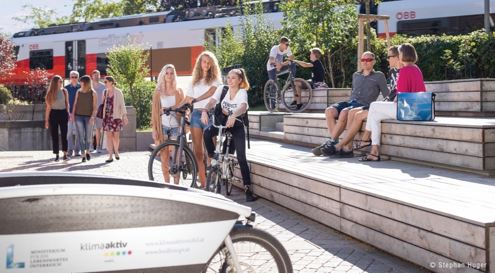Even the best sustainable mobility solutions will only be effective if they are used. Mobility Management refers to the promotion of sustainable transport and managing the demand for car use by offering services with the final objective of changing travellers’ attitudes and mobility behaviour. At the core of mobility management are "soft" measures such as information and marketing campaigns, awareness raising, mobility education, mobility info points, and school and company travel plans. “Soft” measures most often enhance the effectiveness of "hard" measures within urban transport (e.g. new tram lines, new bike lanes or charging infrastructure). Compared to "hard" measures, mobility management measures do not necessarily require large financial investments and may have a high cost-benefit ratio in a short time frame.

Source: EPOMM
In a city where mobility management is implemented, one could, for example, move around using widely available shared transport systems (such as cars, (e-)bikes and e-scooters) and consult the local mobility centre to plan a leisure trip using public transport. In addition, employers could provide incentives for their employees to use public transport to and from the office to discourage them from commuting by car.
For mobility management measures to be effective, it is important to engage stakeholders early on to gain buy-in for the measures to be implemented. Also, they should be limited in their geographic scope, be context specific and demand driven.
Ideally, mobility management measures are part of a Sustainable Urban Mobility Plan (SUMP). This ensures that mobility management measures are implemented in an integrated way with other mobility measures, leading to the desired overall goals of increasing the use of sustainable transport modes, reducing greenhouse gas emissions, and improving air quality. In the end, mobility management measures not only have an impact on the ways in which people move around, but also more broadly on the liveability of urban spaces.
Comments ()